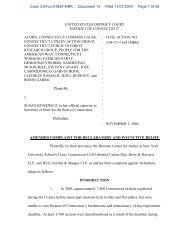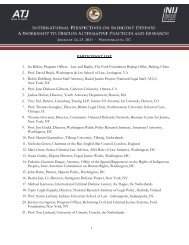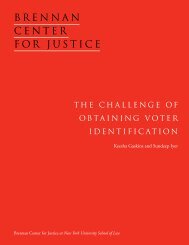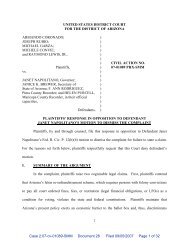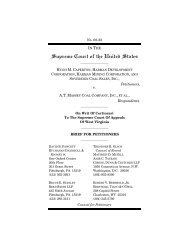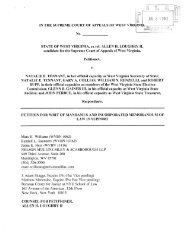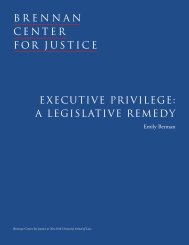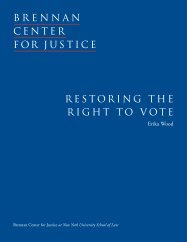THE NEW YORK STATE LEGISLATIVE PROCESS: AN ...
THE NEW YORK STATE LEGISLATIVE PROCESS: AN ...
THE NEW YORK STATE LEGISLATIVE PROCESS: AN ...
Create successful ePaper yourself
Turn your PDF publications into a flip-book with our unique Google optimized e-Paper software.
■ Accessibility. An accessible legislature guarantees members of the public –<br />
like their legislators – meaningful opportunities to review and comment upon<br />
legislation prior to its final passage, transparent legislative procedures, open<br />
meetings, and accurate and complete records of governmental proceedings.<br />
Constituents can obtain information about their representatives’ views and<br />
actions, and about the legislative process itself, and can make their views<br />
known to their representatives before final decisions are made.<br />
■ Accountability. An accountable legislature encourages members to take responsibility<br />
for the content of legislation and facilitates voters in their efforts to judge<br />
their representatives for the legislation they pass or fail to pass. To this end, legislators<br />
are given a meaningful role in the development of legislation and can<br />
vote their conscience in committee or on the floor. Lawmakers personally consider<br />
and vote on bills, rather than delegating this responsibility to another or<br />
voting by proxy. Accurate information about legislators’ roles in the lawmaking<br />
process, their committee attendance and votes, and their attendance and votes<br />
on the floor, is readily available to voters in a timely manner. Without both<br />
legislators’ meaningful participation in the legislative process and publicly<br />
available information about the same, voters cannot honestly and effectively<br />
hold their representatives accountable for the actions of the legislature.<br />
■ Efficiency. An efficient legislature produces legislation for the governor’s signature<br />
without unnecessary delays, unduly high ratios of bills introduced to<br />
bills passed, or unnecessary barriers to final passage of a single bill by both<br />
chambers. The financial costs of the legislative process are no greater than<br />
necessary to accomplish the goals outlined already; staff and other legislative<br />
resources are directed where they are most effectively used. A well-functioning<br />
legislative process may not be cheap, but it need not be inefficient in its<br />
use of resources.<br />
In addition to these critical values, a functional legislature provides sufficient evidence<br />
of legislative intent – through committee reports, floor statements, hearing<br />
records, and other documented legislative history – to allow courts and administrative<br />
agencies to interpret and enforce the laws of the jurisdiction accurately<br />
and justly.<br />
This report concludes that New York’s current legislative process deprives the<br />
people of the representativeness, deliberativeness, accessibility, accountability,<br />
and efficiency that they deserve, and that are provided to a greater extent by all<br />
other legislatures in the United States. With respect to representation, the current<br />
system effectively shuts the people’s elected representatives out of the policymaking<br />
process, and often prevents important legislation that enjoys majority support<br />
from reaching the floor of the Senate or Assembly. The Legislature’s deliberativeness<br />
is undermined by: a moribund committee system that does not function<br />
effectively, voting procedures that allow bills to be passed into law without<br />
adequate review, and a dysfunctional reconciliation process. The current system<br />
INTRODUCTION 3



